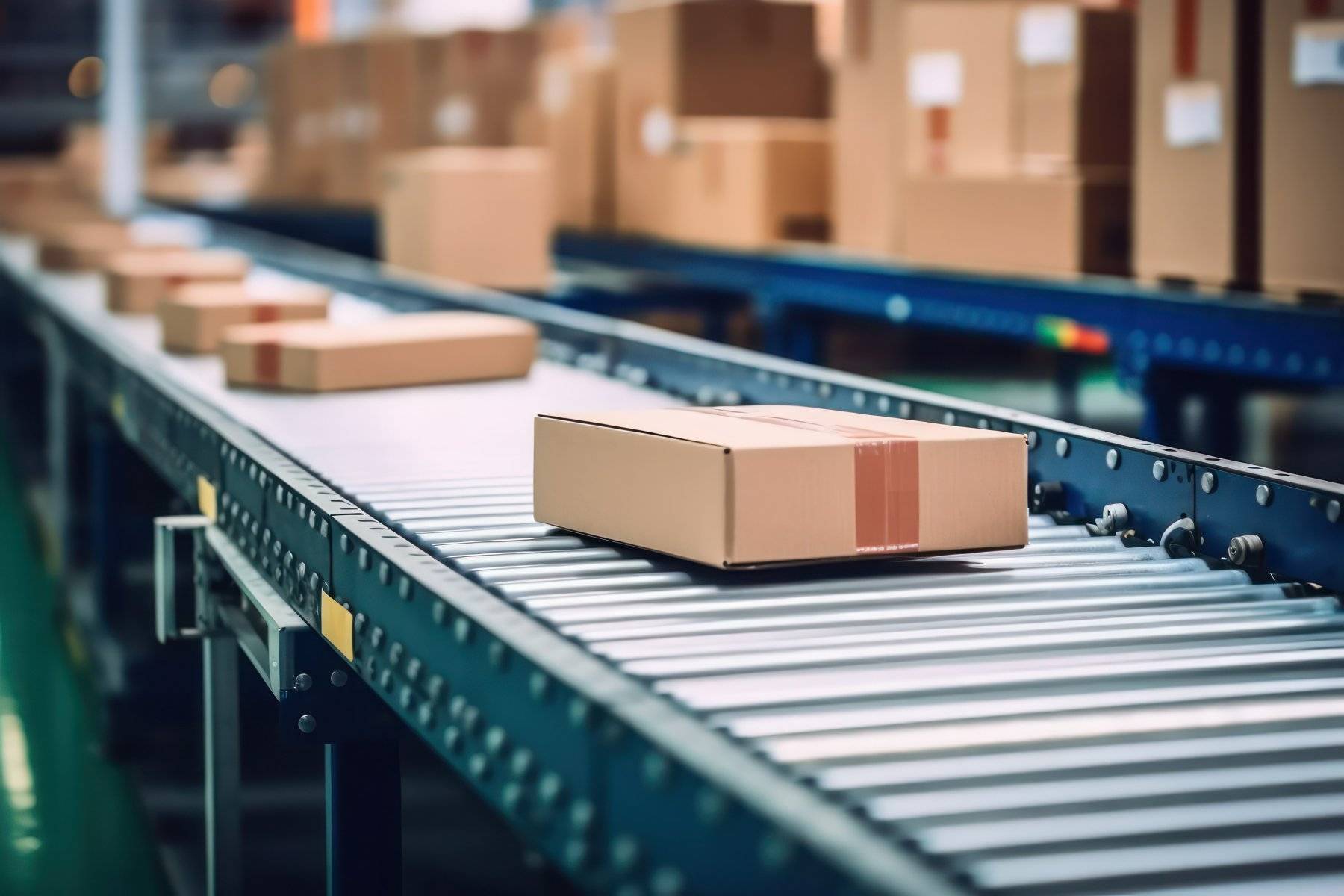Moving finished products from manufacturing plants to warehouses and retail locations is an essential process for most businesses, including yours. This is called freight shipping. It refers to transporting goods in large quantities from one location to another. It’s crucial for many industries, especially manufacturing, distribution, retail, and e-commerce.
There are several types of freight shipping available. This depends on the nature of the goods being transported, the distance involved, and the urgency of delivery. These include the following:
- Full Truckload (FTL): This involves dedicating an entire truck to a single shipment.
- Less Than Truckload (LTL): This is for shipping that doesn’t require an entire truck.
- Air Freight: This refers to shipping goods via aircraft.
- Ocean Freight: This refers to shipping goods via cargo ships.
- Rail Freight: This refers to transporting goods via steam engines or trains.
No matter what type you choose, it’s crucial to ensure that the process is done effectively and safely—free from theft, liability concerns, and cargo damage. But the question is how? This post will guide you to safe and efficient freight shipping with some of the best practices in the industry. Read on to learn more!
Use Timber Bases
Using timber bases, or timber pallets, is one of the most effective ways to promote safe freight transportation. These provide a stable and even surface for stacking and securing cargo and help distribute the load’s weight evenly.
Timber bases reduce the risk of product damage during transit and are crucial when shipping heavy or fragile goods, including wooden shipping crates.
Aside from providing stability and promoting even load distribution, here are other benefits of using timber bases in freight shipping:
- Protection Against Moisture And Contamination: Timber bases act as a barrier between the cargo and the floor. They help protect goods from moisture, dirt, and other contaminants that may be present on the floor, minimizing the risk of damage or spoilage, especially when transporting perishable goods (e.g., food).
- Enhanced Handling And Efficiency: Timber bases make it easier to load and unload cargo from containers or trucks using forklifts or pallet jacks. The standardized dimensions of timber pallets enable efficient handling, thus reducing the time and effort required for manual labor.
- Compatibility And Intermodal Transport: Timber bases are widely accepted across various industries and logistics networks. They’re compatible with different types of handling equipment and can be easily transferred between different modes of transportation, such as trucks, trains, and ships, without repackaging.
- Cost-Effectiveness And Reusability: Timber is generally cost-effective compared to other materials used for shipping bases. They’re often reusable and can withstand multiple trips, reducing the need for frequent replacement. This contributes to cost savings and makes timber bases an environmentally friendly option.
Remember that shipping base regulations may vary across regions and industries. Always ensure compliance with applicable standards and consult with shipping experts to determine the most suitable material for your shipping requirements.
Pack For Strength From Inside-Out
During freight shipping, cargo may shift free and knock against each other during transit, causing damage. When packing goods, it’s essential to prioritize strength and durability to ensure your package arrives intact. Here are some simple yet helpful tips to do just that:
- Choose The Right Container: Pick a sturdy and appropriately-sized container for your items. You may consider using a double-walled corrugated box, as it provides extra strength. And make sure you avoid using containers that are damaged or weak.
- Wrap Individual Items: Individually wrap each item in bubble wrap or packing paper to provide cushioning and protection against impact. Then, secure the wrapping with tape to keep it in place.

- Use Void Fill Material: Fill empty spaces in the box with void fill material, such as packing peanuts, air pillows, or crumpled paper. This helps prevent the items from shifting during transit and adds an extra layer of protection.
- Reinforce Corners And Edges: Strengthen the corners and edges of the package by adding extra padding. You can use foam corner protectors or cardboard reinforcements to provide additional support.
- Seal The Box Securely: Use durable packaging tape to seal the box. Make sure to apply tape along all seams to prevent it from opening during transit. Then, reinforce the bottom portion with extra adhesive layers for added strength.
- Protect Against Moisture: If your items are moisture-sensitive, consider using plastic wrap or moisture-resistant packaging materials. This helps prevent damage caused by humidity or condensation.
Remember, it’s always a good idea to consult with your freight shipping provider for specific packaging requirements or any additional guidelines they may have.
Label Your Cargo Properly
Improperly labeled goods can slow down the shipping process. That’s why it’s crucial to ensure that every box is appropriately marked with names, company information, and contact details in addition to the list of contents.
Here are some tips to follow when labeling boxes:
- Use A Durable Shipping Label: Choose a label that can withstand handling, temperature changes, and moisture exposure. Self-adhesive labels would be a better option.
- Prepare The Label: Write or print the necessary information on the label clearly and legibly. This may include the following:
- Destination Address: Write the recipient’s complete address, including their name, street, city, state/province, ZIP/postal code, and country.
- Return Address: Write your own address as the return address. This is important in case the package needs to be returned to you for any reason.
- Contact Information: Provide a contact number or email address that can be used for inquiries or if any issues arise during transit.
- Special Instructions: If there are any specific handling instructions, such as ‘Fragile,’ ‘This Side Up,’ or ‘Do Not Stack,’ clearly indicate them on the label.
- Attach The Label Securely: Ensure the label is affixed securely to the box, preferably on the largest side or the top of the package. Consider using clear packing tape to reinforce and protect the label from damage.
- Duplicate Labels: It’s a good practice to include a duplicate or additional label inside the package. This can help in case the original label becomes unreadable or detached during transit.
- Hazardous Materials: If you’re shipping hazardous materials, make sure you comply with the appropriate regulations and include necessary labels as required by the shipping carrier and local authorities.
- Additional Documentation: You may need to attach other documents, such as invoices or customs forms. These provide information about the contents and help facilitate customs clearance if shipping internationally.
- Barcodes And Tracking Numbers: If your carrier provides barcodes or tracking numbers, ensure they’re included on the label. This allows for efficient tracking and monitoring of the shipment.
Check the specific requirements of your chosen shipping carrier, as they may have their own guidelines and label formats. Doing so will help ensure your packages are correctly labeled and ready for freight shipping.
Conduct Inspection And Maintenance
Inspection and maintenance are essential during freight shipping to ensure cargo safety and smooth shipping operations. Check the goods as well as the vehicle before transport, ensuring everything is in good condition and appropriately secured.
Here are some steps to follow when conducting freight inspections and maintenance:
- Verify The Condition Of The Cargo: Before loading the cargo onto the shipping container, inspect it thoroughly for any damage or defects. Ensure the packaging is intact and suitable for shipping.
- Check For Proper Documentation: Review all shipping documents, including bills of lading, packing lists, and customs forms, and ensure they’re accurate and complete.
- Inspect The Container: Examine the shipping container for any signs of damage, such as dents, cracks, or holes. Also, don’t forget to check the floor, walls, and ceiling to ensure they’re structurally sound.
- Verify Container Cleanliness: You want the shipping container to be clean and free from contaminants or residues that could affect the cargo. This is especially crucial when handling and transporting perishable goods that may spoil during transit.
- Employ Proper Loading Techniques: Ensure the cargo is loaded onto the container properly, taking weight distribution and specific handling instructions into account. Don’t forget to use appropriate loading techniques to prevent shifting during transit.
- Secure The Cargo: Use straps, chains, or other suitable restraints to secure the cargo within the container, minimizing the risk of movement or damage during transit.
- Inspect Equipment: Regularly inspect and maintain shipping equipment such as containers, pallets, and lifting gear to ensure they’re in good working condition.
- Repair And Maintenance Schedule: Establish a routine maintenance schedule to address any repairs or servicing requirements for shipping containers, vehicles, and handling equipment.
If you don’t know where to start, consider consulting a shipping and logistics professional or referring to specific guidelines provided by freight companies for more detailed instructions.
Promote Effective Communication
Effective communication is crucial in freight shipping, ensuring smooth operations, timely deliveries, and customer satisfaction. It allows all parties involved, including shippers, carriers, and customers, to stay informed about the status of shipments or any schedule changes. This helps in managing expectations and reducing uncertainties.
In addition, effective communication facilitates quick problem identification and resolution. Prompt communication between parties may allow for timely intervention and corrective actions if there are any issues or challenges during transit. This minimizes disruptions and reduces the impact on the overall supply chain.
To achieve effective communication in freight shipping, consider the following practices:
- Clear Communication Channels: Establish reliable communication channels, such as phone, email, and web-based platforms. Then, ensure all parties have the necessary contact information and encourage prompt responses to queries or requests.
- Standard Operating Procedures (SOPs): Develop SOPs for communication protocols within your organization and with external stakeholders. Then, clearly define responsibilities, communication channels, and procedures for different scenarios.
- Real-Time Tracking: Advanced tracking technologies provide real-time shipment visibility to relevant parties. This enables proactive communication and ensures stakeholders know of deviations or potential issues.
- Documentation And Information Sharing: Ensure timely exchange of shipping documentation, including bills of lading, customs forms, and delivery receipts. You can also use digital platforms to enhance efficiency and reduce errors.
Keep in mind that effective communication is a two-way process. Actively listen to the concerns and feedback of your stakeholders and incorporate them into your communication practices to further improve your freight shipping operations.
Provide Training And Education
Providing your staff with sufficient learning opportunities is essential for safe and efficient freight shipping. Relevant staff and drivers should have the proper training to know how to handle goods, operate vehicles, and manage risks effectively.
In addition, the freight shipping industry is heavily regulated, with numerous laws governing the transportation of goods. That’s why training and education are important. This helps professionals stay updated on the latest regulations and ensure compliance.
Here’s how you can provide training and education to your freight shipping staff:
- Develop A Training Plan: Start by creating a comprehensive training plan that outlines the objectives, content, and methods for delivering the training. Afterward, determine the appropriate training methods based on the content and audience, such as classroom training, online courses, workshops, or on-the-job training.
- Establish Training Resources: Gather all the resources you need to support the training program. This may include the right materials, equipment, software, facilities, and expert instructors. Also, consider using internal resources or partnering with external training providers who specialize in freight shipping.
- Conduct Training Sessions: Execute your training plan by conducting training sessions. Make sure your instructors are knowledgeable and experienced in the subject matter. And encourage interactive learning through discussions, case studies, or hands-on exercises to foster engagement and boost knowledge retention.
- Provide Practical Experience: If possible, offer opportunities for practical experience. This may include job shadowing, internships, or apprenticeships, where trainees can gain hands-on experience in real-world freight shipping operations. Practical experience reinforces theoretical knowledge and helps trainees develop practical skills.
- Incorporate Regulatory Compliance: Ensure that training programs cover relevant regulatory compliance requirements in the freight shipping industry. This includes material handling, customs procedures, security protocols, and environmental regulations.
- Evaluate Training Effectiveness: Regularly evaluate the effectiveness of the training program to ensure it meets the desired outcomes. Use feedback forms, quizzes, or assessments to foster understanding and skill development. Analyze the results and make necessary adjustments to improve future training sessions.
Keep in mind that training and education should be an ongoing process. Investing in comprehensive and tailored training programs can help you enhance the knowledge and skills of those involved in freight shipping.
Final Words
Efficient and reliable freight transportation is essential for both businesses and individuals. Especially if you find the best freight rates for each route. By implementing the above best practices and innovative tools with ongoing customer support, you can optimize your logistics, reduce costs, and ensure timely delivery of goods.
Remember to plan and organize shipments, focus on efficient packaging and loading, and maintain effective communication and documentation. Find customized pricing and support solutions for your logistics operations. By adhering to these advice, you can successfully navigate the complexities of freight shipping and achieve greater satisfaction for you and your customers.

